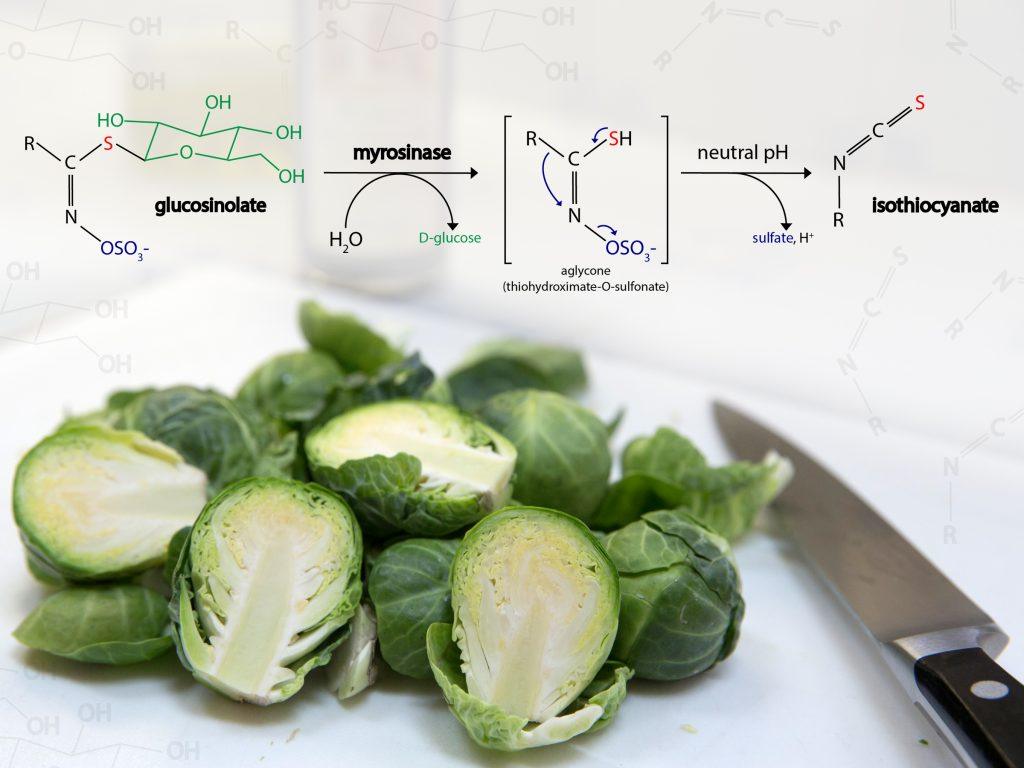
Brussels sprouts are named after Brussels, Belgium, where it is believed they were first widely cultivated in the 16th century. Sometimes called mini cabbages, they have appeared on “most hated vegetable” lists due to their potentially bitter flavors caused by sulfur-containing compounds. Overcooking the vegetable, particularly by boiling, will intensify any bitter flavors and unpleasant odors. However, when properly cooked and seasoned, Brussels sprouts offer a natural, nutty sweetness.
In the U.S. the majority of Brussels sprouts are grown in California, though they can likely be found at your local farmers markets. They are available throughout the year but peak growing season is in the fall through early spring.
Source Of
- Vitamin C
- Vitamin K
- Folate
- Carotenoids (beta-carotene, lutein, zeaxanthin)
- Fiber
Brussels Sprouts and Health
Brussels sprouts fall into the Brassica oleracea family of cruciferous vegetables that also includes broccoli, cauliflower, cabbage, kale, and collard greens. Cruciferous vegetables contain a sulfur-containing phytochemical called glucosinolate, which is responsible for the distinctive odor and bitter flavor. Cooking and digestion break down glucosinolates into compounds called isothiocyanates that have been researched for their anti-cancer effects, such as protecting cells from DNA damage and preventing new blood vessels from growing in tumor cells.[1-3] However, there is no direct evidence that Brussels sprouts have anti-cancer effects in humans, and some evidence has suggested that they may increase the risk of pancreatic cancer.[4] While we wait for further evidence, it makes sense to eat them no more than once per week, varying our diet with the many options of cruciferous vegetables such as broccoli, cabbage, and cauliflower.
Make
Purchase Brussels sprouts that are bright green with tightly compacted leaves. Yellow or wilted leaves are signs of aging and deterioration. They can last 3 to 5 weeks at a freezing temperature of 32 F, and about 1 to 2 weeks refrigerated. Longer storage may cause discoloration, black spots on the leaves, wilting, and decay.[5] Older Brussels sprouts also tend to produce stronger odors.

Rinse Brussels sprouts under cool running water to remove any debris. Slice off the tough bottom stems and remove any outer discolored leaves.
Roasted: Halve the Brussels sprouts and arrange cut-side-down in a single layer on a baking sheet lined with parchment paper or in a baking dish. Drizzle with olive oil and pinch of salt. Roast in a preheated oven at 400 F until browned on the exterior and tender on the inside. Smaller Brussels sprouts (about 1” in diameter) should be roasted for 18 minutes, while those 1.5” in diameter or larger may take 20-25 minutes. (Learn more about the science behind roasting cruciferous vegetables.)
Steamed: Fill the bottom of a pot with 2 inches of water. Cover and bring to a boil. Place cleaned and trimmed Brussels sprouts in a steamer basket and insert into the pot. Turn heat to medium, cover pot, and allow to cook for 6-8 minutes or until just tender. Allow steam to escape by uncovering pot every few minutes to release the strong sulfur compounds.
Shaved: Slice Brussels sprouts in half lengthwise. With cut side down, slice into thin rounds and then separate the leaves into shreds with your fingers. These can be used in salads or a quick sauté with a little olive oil.
Serve
- Add 1 cup of shaved Brussels sprouts to any salad, soup, or stew.
- Mix cooked Brussels sprouts with nuts (sliced almonds, walnuts, or pecans) and dried fruit (currants, raisins, or diced apricots).
 Season cooked Brussels sprouts:
Season cooked Brussels sprouts:
- Drizzle with olive or sesame oil and a squeeze of lemon juice
- Sprinkle a finely grated tangy cheese such as Parmesan or Pecorino
- Drizzle with a combination of ¼ cup of balsamic vinegar and 1-2 tablespoons honey or maple syrup
- Garnish with basic, chives, parsley, or thyme
- Brussels sprout chips: Peel away single leaves of Brussels sprouts and arrange on a baking sheet lined with parchment paper or foil. Drizzle with olive oil and roast at 375 F for 15-20 minutes or until browned and crispy.
More recipe ideas and serving suggestions featuring Brussels sprouts:
- Roasted Brussels Sprouts
- Roasted Brussels Sprouts with Shallots in Walnut Oil
- Three Green and Wheat Berry Salad with Mushroom “Bacon”
Did You Know?

Some grocery stores sell Brussels sprouts attached to their tall stalks. They not only look grand but help to prolong freshness as the stalks nourish the sprouts post-harvest and help to retain their moisture longer than loose sprouts.


